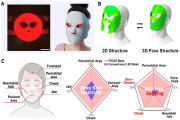• Mini LED backlighting represents a significant upgrade in display technology and is becoming more and more cost-competitive.
• Active matrix products are the key to increasing Mini LED presence in the high-end TV segment.
The increase in die bonding efficiency, the decrease in Mini LED chip cost, and the historical low of open cell prices all contributed to the significantly lowered costs of displays utilizing Mini LED backlighting. According to the New Display Technology Cost Analysis quarterly report from the WitsView research division of TrendForce, Mini LED backlighting has significantly lowered the cost of display modules used in 65-inch 4K TVs. These display modules are estimated to see approximately 5-10% cost reductions compared to 2018 costs. This is expected to accelerate the widespread adoption of Mini LED.
TrendForce assistant research manager Julian Lee indicates that the two-year development period, from the 2H17 emergence of Mini LED technology to its current commercialization, is much more efficient than the longer developmental periods of past display technologies. As Mini LED backlighting is based on the traditional structure of LCD panels, it pushes direct-lit backlighting to its technological limits and represents a significant upgrade for current backlight technology. With the 4Q19 North American release of TCL’s 65-inch and 75-inch TVs featuring Mini LED backlighting, consumers are offered a new choice in the high-end TV segment.
Active matrix (AM) products have the potential to increase the technology penetration of Mini LED backlighting in the high-end TV segment
Regarding the cost of different technologies used in 65-inch UHD 4K TV, the total cost of high-end display modules with edge-lit backlights sits at about US$350, while passive matrix (PM) displays with Mini LED backlights, consisting of around 16,000 LED chips, costs between $650-690. On the other hand, the module cost of dual cell TV released by Hisense this year is estimated at $630. Although the processing cost of Mini LED TV is still slightly high, Mini LED TVs are starting to be cost-competitive in the market.
According to TrendForce, most TVs with Mini LED backlighting that are mass produced this year are PM type. However, as the number of backlighting zones increases, the number of LED drivers required increases as well; in turn, this raises the size of LED driver boards, which further raises the processing cost of PM TV. Conversely, AM displays with Mini LED backlighting are superior to PM displays, as the number of backlighting zones increases, both in terms of cost competitiveness and in terms of specifications, which come close to rivaling OLED. As a result, panel manufacturers such as Innolux, AUO, BOE, and CSOT are actively developing AM products, which are key to increasing the share of Mini LED backlighting in the high-end TV market segment.


|
For further information about the report, please contact:
|
|
Global Contact:
|
|
|
|
|
|
Taipei:
|
ShenZhen:
|
|
|
|
|
|
|
For further information about the advertising, please contact:
|
|
Global Contact:
|
Taipei:
|
|
|
|





 CN
TW
EN
CN
TW
EN







